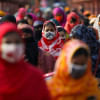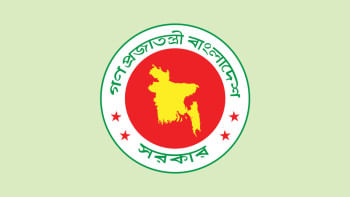Incentive cuts will hurt exports. That’s for the time being

Exporters have expressed disappointment about the government's sudden cut in cash incentives on the shipment of garments and other export-oriented products as the move might bring about a negative impact for them as well as the economy.
Garment makers, who account for 85 percent of the national receipts from the external sector, are particularly unhappy as it comes at a time when their businesses are in trouble for both external and internal challenges and they plan to cement their position in the global market by expanding their footprint.
On the back of the direct cash support from the government's coffer, the duty-free raw material import benefits, and a reduced corporate tax over the years, the sector has emerged as the second-largest apparel supplier worldwide after China, accounting for 7.9 percent of the $750 billion global apparel trade annually.
The sector, which shipped goods worth $47 billion in the last financial year, is the biggest source of foreign currencies in Bangladesh.
In keeping with the garment industry, the primary textile sector has also thrived as a key backward linkage segment, meeting nearly 90 percent requirements of raw materials in the knitwear sector and 40 percent in the woven sector.
The journey for the garment industry began in the late 1970s and it started growing with the European Union's generous Generalised Scheme of Preferences and the Multi-Fibre Arrangement, which have offered duty waiver to Bangladesh, a least-developed country (LDC) since 1975.
At 67 percent, Bangladesh has turned into the highest beneficiary of the LDC-linked benefit in the EU among the eligible nations. The country's 71 percent of overseas sales is LDC-induced and it enjoys duty benefit in 38 countries and territories.
Successive governments of Bangladesh also spoon-feed the industry as it has been the largest employer in the manufacturing sector. Because of its bright prospect of creating jobs and pulling people out of poverty in one of the poorest nations in the world, exporters were at one point given a 25 percent cash incentive to help them capture a major share of the global clothing market.
However, the garment sector's journey might not remain smooth going forward as exporters may see an end to the duty-free export benefit once the country moves out of the LDC category to become a developing nation in November 2026.
In order to prepare the export industry for a shock that could emanate from a sudden withdrawal of export subsidies two years later, the government on Tuesday cut the incentive to a large extent. But the move was unexpected.
The government used to give cash assistance ranging from 1 percent to 20 percent on export earnings. On Tuesday, the maximum rate was set at 15 percent and the minimum at 0.5 percent and it would be applicable for January 1 to June 30 this year.
Currently, 43 sectors are eligible for the aid, with the government spending about Tk 9,025 crore annually in the past three years.
Before Tuesday, a garment supplier used to enjoy a 4 percent incentive on exports if they use local fabrics, an additional 2 percent in the eurozone, 4 percent in emerging markets, which exclude the EU, the US, Canada and the UK. The incentive is 1 percent in all markets.
Faruque Hassan, president of the Bangladesh Garment Manufacturers and Exporters Association (BGMEA), said the impact would be felt in three forms.
First, the latest decision came into effect retrospectively from January 1. But exporters have already calculated their cost of business based on the rates that were at least supposed to be in place up to June this year as stated in the budget.
Second, the subsidy has been reduced for three promising destinations, namely Japan, India and Australia. Of the $8.5 billion garment shipment to the non-traditional markets, the three countries account for half.
"Exporters should have been rewarded for finding out the new export destinations. But by cutting the incentive, exporters are being punished," said Hassan.
Third, he said, the cash support has been significantly reduced for the top five garment items that make up more than 70 percent of the total shipment from the sector.
The BGMEA chief says the incentive cut comes at a time when exporters are running businesses even at less than the production cost amid volatility in the global and domestic economies.
"During volatile times, the incentive offered major support to us."
"If the government subsidy does not continue, attaining the targets of raising apparel exports to $100 billion by 2030 and grabbing a 12 percent global market share by 2026 will be difficult."
Mohammad Ali Khokon, president of the Bangladesh Textile Mills Association, said the cash incentive has been cut for top garment items that are also related to the local yarn, fabrics, weaving, spinning and dyeing sectors.
"The $25-billion primary textile sector will face a difficult time because of the decision."
"What will happen to the goods that have already been shipped taking into account the previous incentive rates?"
The leaders of the Federation of Bangladesh Chambers of Commerce and Industry, the BGMEA, the BTMA and the Bangladesh Knitwear Manufacturers and Exporters Association (BKMEA) are scheduled to meet with the finance secretary on Sunday to keep the rates in the previous form for at least up to 2026.
Mohammad Hatem, executive president of the BKMEA, said many may argue that exporters are benefiting from the devaluation of the taka.
"But it is also true that exporters need to buy US dollars at Tk 123 to import raw materials although they receive Tk 112 when they sell dollars."
Md Saiful Islam, managing director of Mazeda Jute Industries Ltd, said the jute sector will not revive if the cash incentive reduction remains in place.
"The jute and jute goods sector need more subsidies and loans at a lower interest rate."
Ahsan H Mansur, executive director of the Policy Research Institute, welcomed the government move, saying World Trade Organisation (WTO) rules don't support direct cash support to developing nations.
"The government can subsidise different sectors indirectly and the garment sector does not need any financial support because it is a matured industry already."
The garment industry also enjoys a lower corporate tax: it is 10 percent for green initiatives and 12 percent for non-green factories.
Mansur said garment exporters have benefited from a nearly 30 percent fall in the value of the taka against the dollar.
"However, the government should think about non-garment sectors and they really need support to grow."
Prof Mustafizur Rahman, a distinguished fellow at the Centre for Policy Dialogue, also supported the move, calling for other measures so that exporters become more competitive.
The exporters' competitiveness could be raised through better institutional support, less harassment, improvement in the business environment, and a reduction in the cost of doing business, he said.

 For all latest news, follow The Daily Star's Google News channel.
For all latest news, follow The Daily Star's Google News channel. 








Comments